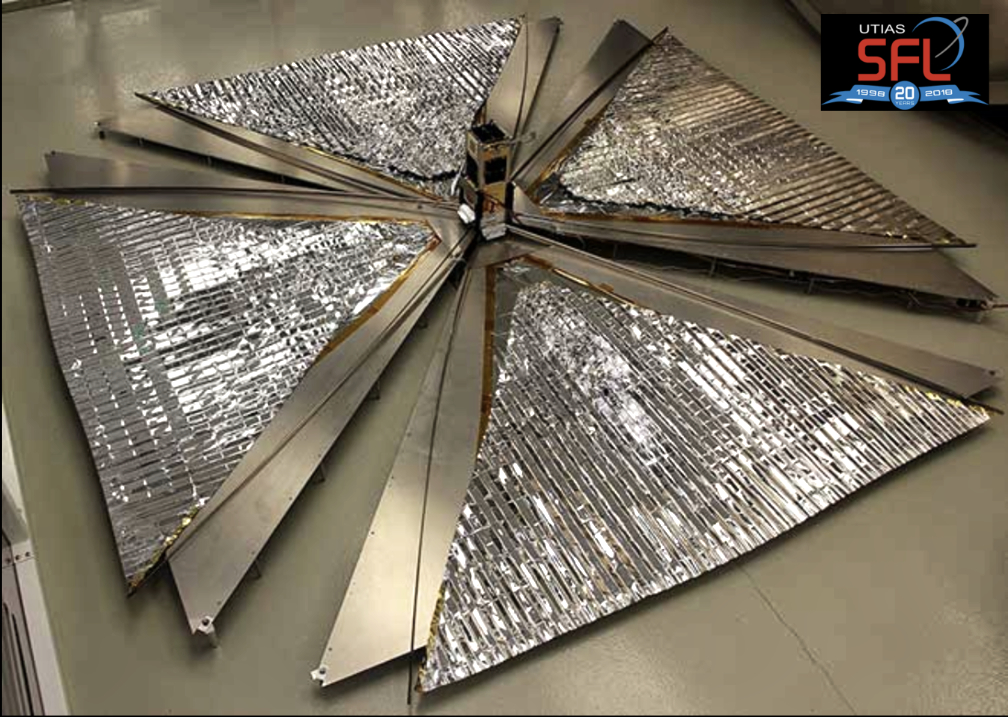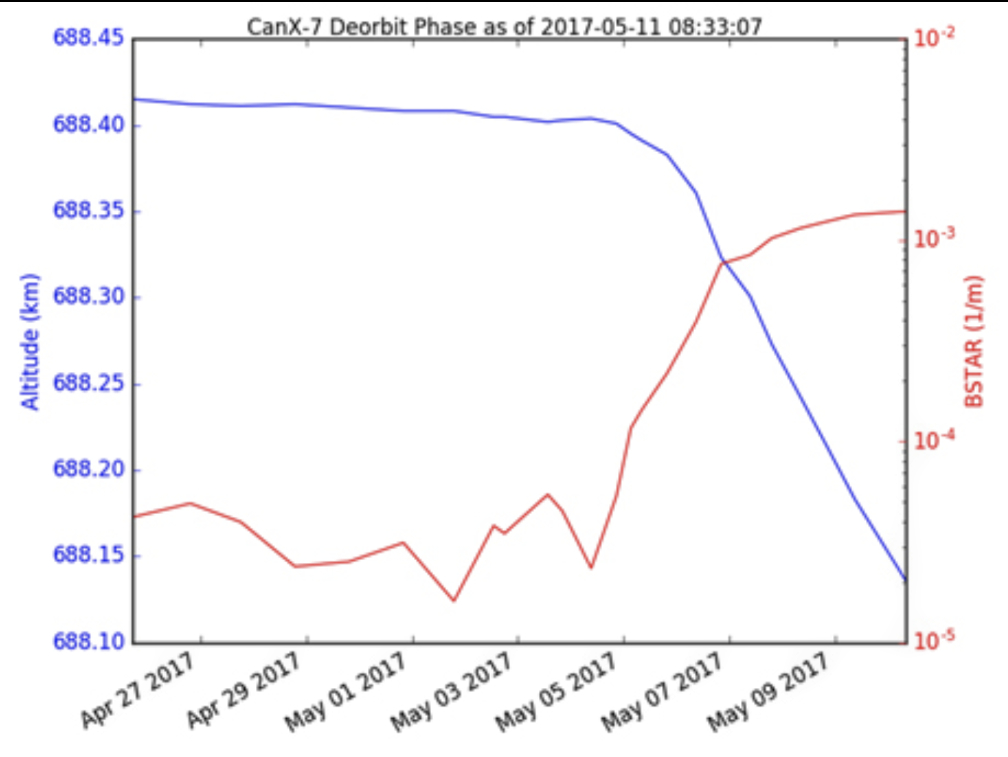
Space Flight Laboratory (SFL) has announced the successful deorbiting of the 3.5 kg. CanX-7 demonstration smallsat using drag sail technology designed to reduce the time retired smallsats spend in orbit as space debris.
CanX-7 burned up in Earth’s atmosphere in May, just five years after drag sail deployment and roughly 178 years before the satellite would have spent on-orbit without any deorbit technology.

CanX-7 was a 10x10x34cm smallsat built by SFL and funded by Defence Research and Development Canada, the Natural Sciences and Engineering Research Council, COM DEV Ltd., and the Canadian Space Agency. The satellite was launched in September of 2016 with a two-fold mission of demonstrating Automatic Dependent Surveillance – Broadcast (ADS-B) message collection from space for global aircraft situational awareness, and then testing the deorbiting technology developed by SFL.
SFL deployed the four drag sails – each about one square meter in area – on May 4, 2017, with the intent of decreasing the ballistic coefficient of the nanosatellite and using atmospheric drag to accelerate orbital decay. Mission participants observed an almost immediate change in altitude decay rate and continued tracking the orbital decay rate until CanX-7 re-entered the atmosphere on April 21, 2022.
“The SFL drag sail technology developed for nano- and microsatellites is among the only commercially viable deorbiting devices available today, aside from propulsion,” said SFL Director, Dr. Robert E. Zee. “The drag sails performed better than designed, deorbiting CanX-7 in far less time than the maximum 25-year target recommended by the Inter-Agency Space Debris Coordination Committee (IADC).”
“Orbital debris is a big concern for the space industry, and the passive de-orbit technology demonstrated on CanX-7 is an advantageous solution for nano- and microsatellites,” said SFL’s CanX-7 Mission Manager, Brad Cotten. “The mission verified that SFL’s lightweight drag sail technology is a more cost-effective and less complex method for deorbiting smaller satellites than traditional propulsion techniques.” Additionally, the deorbiting technology allows smallsats to be launched into a wider range of orbits than would be possible if natural orbital decay were to be relied upon, he said.
According to Dr. Lauchie Scott, defence scientist with Defence Research and Development Canada, the CanX-7 drag sail deployment campaign provided a very rare opportunity to observe a satellite drastically change shape and size while being tracked by ground-based telescopes. This view showed the nanosatellite’s brightness signature during the sail deployment and how its rotational motion evolved while the longer-term space sustainability deorbit experiment continued. Dr. Scott added that this was an outstanding Canadian collaboration to help mitigate risk from space debris.
According to Dr. Brad Wallace, defence scientist with Defence Research and Development Canada, the project successfully proved that UTIAS/SFL’s innovative drag-sail technology can deorbit a spacecraft decades faster than would have happened otherwise and demonstrated Canada’s continued leadership not only in space technology, but also in responsible space stewardship. He added that the lessons learned from the CanX-7 mission will be used to help minimize the number of inoperable spacecraft orbiting the Earth, ensuring that space continues to be used to benefit Canadians and people around the world.
SFL is a unique microspace provider that offers a complete suite of smallsats that satisfy the needs of a broad range of mission types from 3 to 500 kilograms. Dating from 1998, SFL’s heritage includes 61 operational successes and 31 currently under construction or awaiting launch. These missions relate to Earth Observation (EO), atmospheric monitoring, ship tracking, communication, radio frequency (RF) geolocation, technology demonstration, space astronomy, solar physics, space plasma, and other scientific research. In its 24-year history, SFL has achieved more than 194 cumulative years of operation in orbit. These microspace missions have included SFL’s trusted attitude control and, in some cases, formation-flying capabilities. Other core SFL-developed components include modular (scalable) power systems, onboard radios, flight computers, and control software.
